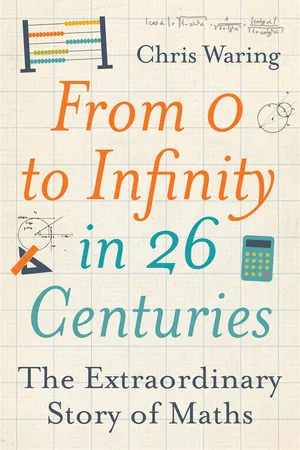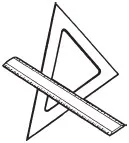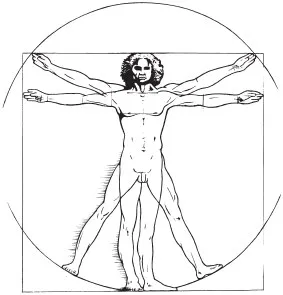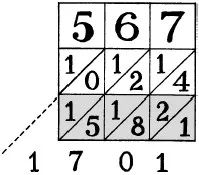
- English
- ePUB (mobile friendly)
- Available on iOS & Android
eBook - ePub
About this book
We may remember their equations and discoveries from school, but do we remember who the men behind the maths were? From the theories of Pythagoras (did you know he ran a secret brotherhood that studied maths, music and gymnastics?) to coining the term 'Googol', From 0 to Infinity in 26 Centuries: The extraordinary story of maths is packed full of fascinating facts and surprising stories from ancient times to the modern day.Do you want to know why the Ancient Greeks knew so much maths? Or, why there was so little maths studied in the Dark Ages? Read this fascinating book to uncover the mysteries of maths...
Frequently asked questions
Yes, you can cancel anytime from the Subscription tab in your account settings on the Perlego website. Your subscription will stay active until the end of your current billing period. Learn how to cancel your subscription.
At the moment all of our mobile-responsive ePub books are available to download via the app. Most of our PDFs are also available to download and we're working on making the final remaining ones downloadable now. Learn more here.
Perlego offers two plans: Essential and Complete
- Essential is ideal for learners and professionals who enjoy exploring a wide range of subjects. Access the Essential Library with 800,000+ trusted titles and best-sellers across business, personal growth, and the humanities. Includes unlimited reading time and Standard Read Aloud voice.
- Complete: Perfect for advanced learners and researchers needing full, unrestricted access. Unlock 1.4M+ books across hundreds of subjects, including academic and specialized titles. The Complete Plan also includes advanced features like Premium Read Aloud and Research Assistant.
We are an online textbook subscription service, where you can get access to an entire online library for less than the price of a single book per month. With over 1 million books across 1000+ topics, we’ve got you covered! Learn more here.
Look out for the read-aloud symbol on your next book to see if you can listen to it. The read-aloud tool reads text aloud for you, highlighting the text as it is being read. You can pause it, speed it up and slow it down. Learn more here.
Yes! You can use the Perlego app on both iOS or Android devices to read anytime, anywhere — even offline. Perfect for commutes or when you’re on the go.
Please note we cannot support devices running on iOS 13 and Android 7 or earlier. Learn more about using the app.
Please note we cannot support devices running on iOS 13 and Android 7 or earlier. Learn more about using the app.
Yes, you can access From 0 to Infinity in 26 Centuries by Chris Waring in PDF and/or ePUB format, as well as other popular books in Mathematics & History & Philosophy of Mathematics. We have over one million books available in our catalogue for you to explore.
Information
The Renaissance Onwards

The Renaissance began in Italy as early as the twelfth century and witnessed great advances in all fields of intellectual endeavour. It sparked a new-found interest in the culture of the classical civilizations, which made an appreciation for – not to mention an investment in – science, culture and philosophy, the done thing among the wealthy patrons of fourteenth-century Europe.
The initial epicentre of the Renaissance was Florence, Italy, where a wealthy merchant family, the Medicis, became sponsors of art and culture. One artist who benefited from their philanthropy was Leonardo da Vinci.
LEONARDO DA VINCI (1452–1519)
Legendary for his talent in almost every field of intellectual pursuit, da Vinci was equally adept in the arts and the sciences. His superior ability and imagination enabled him both to paint the Mona Lisa and to invent flying machines, among other extraordinary feats.
Perfectly proportioned
Da Vinci was also a keen anatomist, perhaps out of a desire to bring an element of realism to his art. He was very interested in the relative proportions of the human body, and his famous drawing of the Vitruvian Man demonstrates his understanding.

The name of the picture harks back to a Roman architect called Vitruvius. He believed the proportions of the human body are naturally pleasing to the eye, which led him to design his own buildings along similar proportions. Vitruvius considered the navel to be the natural centre of a man’s body. He believed a square and a circle drawn over an image of a man with his legs and arms outstretched would represent the natural proportions of the body. Many artists tried to draw human figures that adhered to Vitruvius’ proportions, but all looked somehow misshapen. Da Vinci, however, discovered the correct drawing could be made if the centre of the circle and the centre of the square are positioned differently.
A Helping Hand
Although da Vinci himself was not a trained mathematician, he did spend time receiving instruction from Luca Pacioli, a highly regarded maths teacher and accountant. Da Vinci created many drawings of solids for one of Pacioli’s books, and his technical expertise with perspective helped to make the diagrams clear.
NICOLAUS COPERNICUS (1473–1543)
A Polish astronomer, Nicolaus Copernicus was one of the first to propose the heliocentric model of the universe: the earth is not the centre of the universe; it does, in fact, orbit the sun. While this was not a mathematical discovery in itself, the way in which Copernicus devised his theory had significant implications for mathematics and science.
The march of science
According to the Bible, the earth was the centre of the universe, which was a perfectly reasonable, if slightly self-important, assumption to have made. After all, both the sun and the moon appear to orbit the earth every day; indeed, all other objects in the night sky appear to do the same.
However, an exploration into the world of astronomy soon revealed problems with this assumption. For example, there are times when the planets appear to move in reverse, which could not be explained if the earth is stationary.
Scientists at the time worked empirically, which means they made observations of phenomena and then came up with an explanation to fit what had been observed. But Copernicus did something that was considered very backward by scientists at the time – he first came up with a theory about how the solar system might work and then tested it against observations, using mathematics as his main tool.
While Copernicus’s heliocentric model did not cause much of a stir at the time, his way of working theoretically was one of the first examples of a new way of conducting modern scientific methods.
JOHN NAPIER (1550–1617)
A Scottish nobleman, John Napier was responsible for inventing a new kind of abacus called Napier’s bones. He also discovered logarithms.
Napier’s table
Logarithms are very important in many fields of mathematics and Napier’s book Description of the Wonderful Rule of Logarithms was quickly adopted by those who had to conduct such calculations on a regular basis. It took Napier an astonishing twenty years to perform the calculations required for the tables of logarithms in the book – that’s some dedication.
The logarithm of a number is the number we have to raise ten by in order to generate that number. For example:
The logarithm of 100 is 2 because 100 = 102
The logarithm of 1000 is 3 because 1000 = 103
The shorthand for writing this would be log (1000) = 3
We can find logarithms for numbers that are not whole powers of ten too:
log (25) = 1.39794 because 25 = 101.39794
We can also find the logarithm for numbers using any number, not just 10, as a base:
log5 (25) = 2 because 25 = 52
Natural logarithms (see here) are logarithms with a base of e, which is a very special number in mathematics that allows many difficult calculus problems to be solved.
Logarithms today are computed using a calculator or computer, but originally they were worked out either by hand or using Napier’s tables. Before desktop calculators became commonplace people would use logarithms and a slide rule (see here)to perform difficult calculations.
Napier’s bones
Napier also devised a faster and more convenient way of performing multiplication, based on a lattice method that Fibonacci had learned from the Arabs.
Napier’s bones was a useful tool that consisted of a set of sticks engraved with numbers, and each stick had a times table written on it, from 2 times the number up to 9 times the number:

If you wanted to multiply 567 by 3, for example, you would collect together the three sticks that match the large number and then highlight the third row:

You then add the diagonal rows shown on the bones in order to calculate the answer.
Good Point
Napier was also one of the first people to use the decimal point. Although the Hindu-Arabic numeral system was in common use across Europe by this point, a standard way of writing fractions was yet to be formalized. Because Napier needed a concise way to write them for his log tables, he adopted the Hindu-Arabic decimal fractions we use today.
WILLIAM OUGHTRED (1574–1660)
An English mathematician and teacher, William Oughtred continued Napier’s work on logarithms. He is credited with inventing the slide rule, a calculating device that allowed the user to multiply large numbers together using a ruler marked with logarithmic scales (see here), which meant the answer to the multiplication could simply be read off the ruler. Slide rules were used by scientists, engineers and mathematicians up until electronic calculators became commonplace in the 1970s.
In action...
Table of contents
- Cover
- Title page
- Copyright page
- Contents
- Introduction
- Prehistoric Maths
- Early Civilized Maths
- The Ancient Greeks
- The Romans
- Eastern Mathematics
- The Middle Ages in Europe
- The Renaissance Onwards
- The Digital Age
- Modern Mathematics
- The Future of Mathematics
- Bibliography
- Index